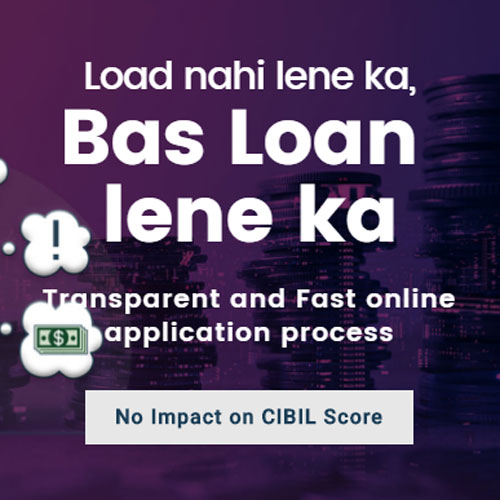How to Calculate Taxable Income on Salary
A person total income is divided into 5 heads of income. They are:
- Income from salaries
- Income from house property
- Profit and gains of business or profession
- Capital gains
- Income from other sources
Salary includes wages, pension, gratuity, fees, commission, perquisites, provident fund contribution, leave encashment, Central Government’s contribution to pension and compensation received for a service.
What is Salary Income?
Salary is the remuneration paid by the employer to the employee for the services rendered for a certain period of time. It is paid in fixed intervals i.e. monthly one-twelfth of the annual salary. Salary includes:
- Basic Salary or the fixed component of salary as per the terms of employment.
- Fees, Commission and Bonus that the employee gets from the employer
- Allowances that the employer pays the employee to meet his personal expenses. Allowances are taxed either fully, partially or are exempt.
- Fully taxable allowances are:
- Dearness allowance paid to the employees to meet expenses due to inflation.
- City Compensatory allowance paid to those who move to big metros like Mumbai, Delhi, Chennai, where the standard of living is higher.
- Overtime allowance paid to the employee who works over the prescribed hours.
- Deputation allowance and servant allowance.
- Fully taxable allowances are:
-
-
- Partly taxable allowances are:
- House Rent Allowance: If the employee stays in his own house then the allowance is fully taxable. The allowance exemption is the least of
- The actual house rent allowance
- If he pays additional rent above 10% of his salary
- If the rent is equal to 50% of his salary (metros) or 40% (other areas).
- Entertainment allowance (except for Central and State Government employees).
- Special allowances like uniform, travel, research allowance etc.
- Special allowance to meet personal expenses like childrens education allowance, children hostel allowance etc.
- House Rent Allowance: If the employee stays in his own house then the allowance is fully taxable. The allowance exemption is the least of
- Fully exempt allowances are:
- Foreign allowance given to employees posted abroad.
- Allowances of High Court and Supreme Court Judges.
- United Nations Organisation employees allowances.
- Partly taxable allowances are:
- Perquisites are payments received by employees over their salaries. They are not reimbursement of expenses. Some perquisites are taxable for all employees, they are:
- Rent free accommodation
- Concession in accommodation rent
- Interest free loans
- Movable assets
- Club fee payments
- Educational expenses
- Insurance premium paid on behalf of employees
-
Some are taxable only to specific employees like directors or those who have substantial interest in the organisation, they are taxed for:
-
-
- Free gas, electricity etc. for domestic purpose
- Concessional educational expenses
- Concessional transport facility
- Payment made to gardener, sweeper and attendant.
-
Some perquisites are exempt from tax. The fringe benefits that are exempt from tax are:
-
- Medical benefits
- Leave travel concession
- Health Insurance Premium
- Car, laptop etc. for personal use.
- Staff Welfare Scheme
- Retirement benefits are given to employees during their period of service or during retirement.
- Pension is given either on a monthly basis or in a lump sum. The tax is treated depending on the category of the employee.
- Gratuity is given as appreciation of past performance which is received at the time of retirement and is exempt to a certain limit.
- Leave salaries tax depends on the category of the employee. The employee may make use of the leave or encash it.
- Provident fund is contributed by both employee and employer on a monthly basis. At the retirement, employee gets the amount along with interest. Tax treatment is based on the type of provident fund maintained by the employer.
Calculate Taxable Income on Salary
Following is the procedure for the calculation of taxable income on salary:
- Gather your salary slips along with Form 16 for the current fiscal year and add every emolument such as basic salary, HRA, TA, DA, DA on TA, and other reimbursements and allowances that are mentioned in your Form 16 (Part B) and salary slips.
- The bonus received during the financial year must be added for the income that is being calculated.
- The total is your gross salary, from which you will have to deduct the exempted portion of House Rent Allowance, Transport Allowance (for which the maximum exemption is Rs.19,200 per year), Medical reimbursement (for which the maximum exemption is Rs.15,000), and all other reimbursements provided the actual bills in respect of the expenses incurred.
- The result is your net income from salary.
Once your net income has been calculated, the following tax slabs will be applicable:
For individuals who are under 60 years of age:
| Net Income | Income Tax Rate | Education Cess | Secondary and Higher Education Cess |
|---|---|---|---|
| Up to Rs.2.5 lakhs | Nil | Nil | Nil |
| Rs.2.5 lakhs to Rs.5 lakhs | 5% of (Total income – Rs.2.5 lakhs) | 2% of income tax | 1% of income tax |
| Rs.5 lakhs to Rs.10 lakhs | Rs.25,000 + 20% of (Total income – Rs.5 lakhs) | 2% of income tax | 1% of income tax |
| Above Rs.10 lakhs | Rs.1,12,500 + 30% of (Total income – Rs.10 lakhs) | 2% of income tax | 1% of income tax |
For individuals who are between 60 and 80 years of age:
| Net Income | Income Tax Rates | Education Cess | Secondary and Higher Education Cess |
|---|---|---|---|
| Up to Rs.3 lakhs | NIL | Nil | Nil |
| Rs.3 lakhs to Rs.5 lakhs | 5% of (Total Income – Rs.3 lakhs) | 2% of income tax | 1% of income tax |
| Rs.5 lakhs to Rs.10 lakhs | Rs.10,000 + 20% of (Total income – Rs.5 lakhs) | 2% of income tax | 1% of income tax |
| Above Rs.10 lakhs | Rs.1,10,000 + 30% of (Total income – Rs.10 lakhs) | 2% of income tax | 1% of income tax |
For individuals who are above 80 years of age:
| Net Income | Income Tax Rate | Education Cess | Secondary and Higher Education Cess |
|---|---|---|---|
| Up to Rs.5 lakhs | Nil | Nil | Nil |
| Rs.5 lakhs to Rs.10 lakhs | 20% of (Total Income – Rs.5 lakhs) | 2% of income tax | 1% of income tax |
| Above Rs.10 lakhs | Rs.1 lakh + 30% of (Total income – Rs.10 lakhs) | 2% of income tax | 1% of income tax |
Deductions on Income from Salary:
The following deductions are available on the income from salary:
- Entertainment tax is allowed as deductions for the State and Central Government employees. The amount is the least of either Rs.5,000, entertainment allowance received by the employee or 20% of the basic salary.
- Professional Tax is the tax on employment which is deducted from the income every month. It is imposed at the state level for every salaried individual.
Please note that the standard deduction is not available for salary income from Assessment Year 2006-2007.
Computation of the Net Salary of an Employee:
Here is how the Net salary of an employee is computed:
| Particulars | Amount (In Rs.) |
|---|---|
| Add: | |
| 1.Basic Salary | |
| 2.Fees, Commission and Bonus | |
| 3.Allowances | |
| 4.Perquisites | |
| 5.Retirement Benefits | |
| ——————- | |
| Gross Salary | ——————- |
| Less: Deductions from Salary | |
| 1.Entertainment Allowance | |
| 2.Professional Tax | |
| ——————- | |
| Net Salary | ——————- |
For computing Total income from various sources, the incomes are classified into:
- Salaries
- Income or loss from property
- Profit and gain from business
- Income from capital gains
- Income from other sources
This gives you an aggregate income. All the eligible deductions, allowance and reliefs are calculated on each heads.
Gross Total Income= A+B+C+D+E
Total Taxable Income= Gross Total Income- Deductions allowed from income
Total Tax Payable= Tax on Total Income- Rebates and relief allowed under Income Tax Act
The tax rate is based on the salary slab that the person falls under. The entire taxable income is then divided into the following 4 parts. These are the rates at which tax will be calculated for the year 2015- 2016:
- For an individual who is less than 60 years of age; total taxable income:
- Up to Rs.2.5 Lakhs: No Tax is charged.
- Rs.2.5- Rs.5 Lakhs: 10% of the amount exceeding Rs.2.5 Lakhs is charged.
- Rs.5 – Rs.10 Lakhs: Rs.25,000 + 20% of the amount exceeding Rs.5 Lakhs is charged.
- Above Rs.10 Lakhs: Rs.1,25,000 + 30% of the amount exceeding Rs.10 Lakhs is charged.
- For an individual above 60 years but less than 80 years; total taxable income:
- Up to Rs.3 Lakhs: Tax is not levied.
- Rs.3 – Rs.5 Lakhs: 10% of the amount exceeding Rs.3 Lakhs is charged.
- Rs.5 – Rs.10 Lakhs: Rs.20,000 + 20% of the amount exceeding Rs.5 Lakhs is charged.
- Above Rs.10 Lakhs: Rs.1,20,000 + 30% of the amount exceeding Rs.10 Lakhs is charged.
- For individual above 80 years of age; the taxable income:
- No tax is charged for taxable income up to Rs.5 Lakhs.
- Rs.5 – Rs.10 Lakhs: 20% of the amount exceeding Rs.5 Lakhs is charged.
- Above Rs.10 Lakhs: Rs.1,00,000 + 30% of the amount exceeding Rs.10 Lakhs is charged.





